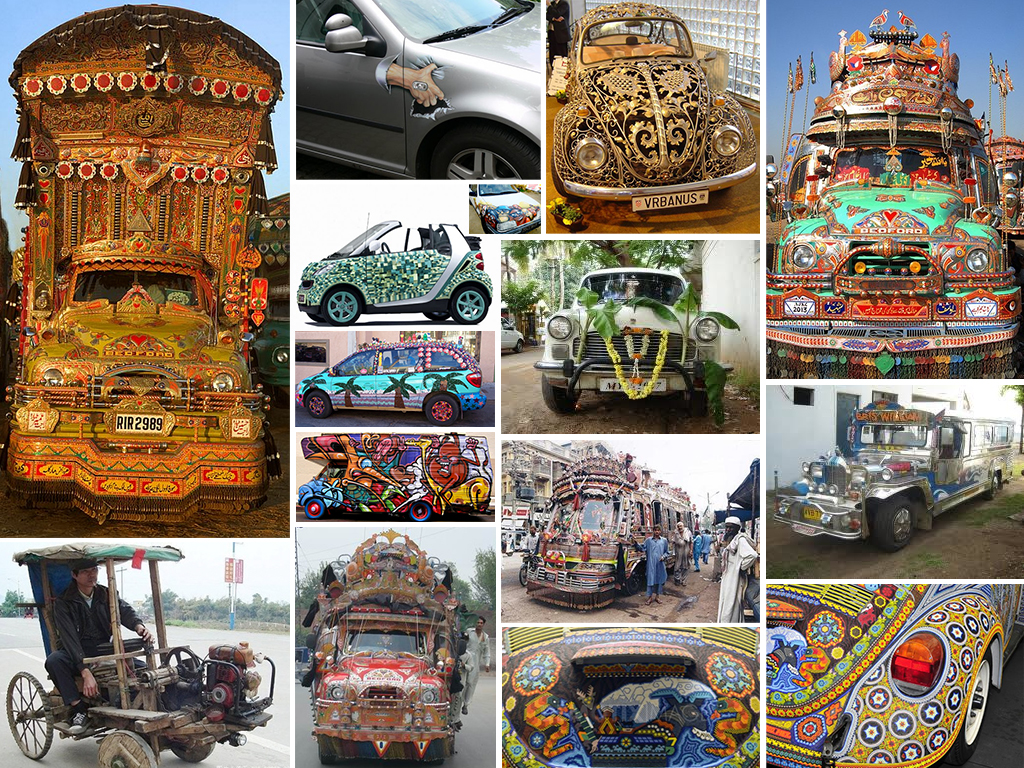Memory can be tricky—somethings seem to come to mind without bidding, while others are stubbornly evading our efforts at recalling them. We have many explanations for how and why somethings are easy to remember and others take so much effort; or why some people are very good at mnemonic feats and others not so much. Many of these mental models of how memory works are faulty (or simply not true) and are based on folksy wisdom passed from one generation to the next. Some of these wisdoms involve tricks for remembering things. For example, my Russian grandmother suggested tying corners of handkerchief to aide memory—if you notice a knot on the corner, you know that there’s something you supposed to remember. Since I don’t carry a handkerchief, I use my rings for the same effect—move a ring from finger to another (where it typically doesn’t belong) and then at least I know that should be keeping something in mind. Of course this strategy does nothing to help you remember what it is you are supposed to remember, but that’s another problem. So I thought to put together a little list of memory-related p-prims—a set of beliefs—that are common in our culture. Below,…
Tag Archive for p-prim
Background Knowledge, Background Knowledge Errors, Causal Net Problems, Cultural Differences, Mental Model Traps, Pipsqueak Articles, Users
p-prims can be dangerous
by Olga Werby •

Some p-prims are harmless, but some can lead to serious bodily harm. The image above shows villages in Indonesia lying on an electrified railway track. Why? They believe this will improve their health. Their p-prim has to do with medicine: “electricity can cure some diseases.” This is not totally untrue, as is the case with all p-prims. Ultrasound therapy helps heal certain muscle strains, and the ultrasound machine runs on electricity. Heat lamps are also commonly used therapeutically. And they too require electricity. There are many, many other examples. It’s easy to explain how such folksy wisdom gets passed around the community. The problem with this particular p-prim is the resulting decisions that people make based on their beliefs in the curative power of electricity. How would a poor farmer in Rawa Buaya, outside Jakarta, get electricity? The most accessible source is this railway track. A tragedy is only a train away…
Cognitive Blindness, Conceptual Design, Cultural Bias, Cultural Differences, Ethnographic & User Data, Mental Model Traps, Pipsqueak Articles
Thinking About Value
by Olga Werby •

Which car do you find more pleasing? Which car would evoke a feeling of envy? Would you shake your head or starting thinking of how you can improve on the looks of your car? Which car’s origin would you place in the South Asia? Which in South America? Which owner cares about the aerodynamic qualities of the vehicle? Regardless of your personal feelings, the owners of these automobiles have clearly invested a tremendous amount of energy and effort into making them look like this and are very proud of the results! Telling a Story Each of the vehicles above tells a story about its owner and about its culture. The story conveys information: the owner’s goals for the car: utility or status symbol or both cultural value of design cultural symbols owner’s attitude towards possessions (e.g.: How long is the car expected to stay with one owner?) owner’s place in the social hierarchy owner’s unique identity owner’s investment into the vehicle (e.g.: time, money, skill, etc.) the perceived value of the vehicle to its owner These stories of cars and their owners change from culture to culture, from place to place, and of course in time. What we consider beautiful…
Attention, Attention Controls Errors, Cognitive Blindness, Conceptual Design, Cultural Bias, Featured, Flow, Interaction Design, Interface Design, Mental Model Traps, Perceptual Focus Errors, Pipsqueak Articles, Product Design Strategy, Users, Working Memory
Multitasking Myth
by Olga Werby •

I’ve been noticing a lot of praise and demand for mutlitaskers: “We are looking for a talented individual who is [insert a laundry list of qualifications here] and is also a great multitasker!” or “Women are naturally better at multitasking.” or “Not only is he gifted, but he is able to work on all these projects simultaneously. If only we had a dozen more just like him!” (—probably just to get anything done!) The interesting aspect of this increased demand for multitasking is the rise of ADHD diagnosis. So I thought it would be an interesting exercise to pin down what exactly is being praised and diagnosed. A Curious Case of ADHD Let’s start with formal diagnostic criteria for ADHD (attention deficit hyperactivity disorder). What are the symptoms of ADHD? Below is a list of attributes that is adapted from the Diagnostic and Statistical Manual of Mental Disorders 4th ed. (DSM-IV). When you read this list the first time, imagine an eight year old boy trapped in an elementary classroom. On the second reading, consider an 80-year-old woman in a nursing home. On the third, visualize a soldier just back from Afghanistan. And finally, when you read the list for…
Anchoring Errors, Background Knowledge Errors, Causal Net Problems, Diagnostic Errors, Errors, Mental Model Traps, Pipsqueak Articles
Alternative Medicine, Placebos, and Rasputin
by Olga Werby •

In the last few weeks there has been several articles and studies published on the effectiveness of alternative medicines and placebos: “Placebos Help Patients Even Without Faking It, Scientists Say“; “Sugar Pills Help, Even When Patients are Aware of Them“; and “Alternative remedies ‘dangerous’ for kids says report“; “Doctors warn over homeopathic ‘vaccines’“. The gist of these beliefs derives from several factors: People Tend to Get Better: most of us get well over time even without medical intervention. Colds pass; flues do too. Most infections heal with time without the aid of antibiotics. Evolution have provided the human race with a great immune system. Medicine helps, we get better faster with treatment. But in most cases, we survive. So when you hear someone recommend an alternative medicine and predict that a cold will go away in three days, chances are you will get better. And over time, we the people develop p-prims (folksy wisdoms) that link health with alternative tratments. “Natural Chemicals” p-Prims: there is a strong belief among industrialized societies, at the present time, that “natural” is better for us than “artificial”. There are many sources of this belief, too many to cover in this short article. And somehow,…
Conceptual Design, Ethnographic & User Data, Interaction Design, Pipsqueak Articles, Product Design Strategy, Scaffolding
Cheating by Design
by Olga Werby •

The Road to Hell is Paved with Good Intentions. This year, the Metropolitan Transpiration Commission introduced the new Clipper Smart Card. Public transit riders all over the Bay Area can now use a convent piece of plastic to pay for their BART trains, buses, MUNIs, etc. Just swipe the Clipper Card past one of the little readers, and the gates open to let you in and out of the station or pay for the bus. The cards could be purchased in stores and vending machines all over the area—$2 cards are the minimum value cards. More money can be easily added to these cards at all BART train stations. The designers of Clipper Card envisioned happy riders and happy transpiration authority. “We’ll make it easy,” the designers said. “Easy to use, easy to fill up. And if the passengers accidently run out of money on their cards, we’ll allow them some small negative balance so they can leave the train station and pay for their rides later.” In the Bay Area, the cost of public transportation is pretty high and it’s highly dependent on how far you want to go: travel from City Hall to Airport, pay $8.10 for a…
Conceptual Design, Contributor, Cultural Differences, Interaction Design, Interface Design
Dating by blood type in Japan
by Roman Shumikhin •
Buerk, R. (2010). “Dating by blood type in Japan.” BBC News. Retrieved on 3 October, 2010: http://news.bbc.co.uk/2/hi/8646236.stm People in most parts of the world do not think about their blood group much, unless they have an operation or an accident and need a transfusion. But in Japan, whether someone is A, B, O or AB is a topic of everyday conversation. There is a widespread belief that blood type determines personality, with implications for life, work and love. Interest in blood type is widespread in Japan, particularly which combinations are best for romance. Women’s magazines run scores of articles on the subject, which has also inspired best-selling self-help books. There are employers who are discriminating against prospective candidates by asking about their blood type. A term for such behavior in Japan is burahara, which translates as blood group harassment. The preoccupation with blood ultimately dates back to theories of eugenics during the inter-war years. Stripped of its racial overtones, the idea emerged again in the 1970s. Now, blood typecasting is as common as horoscopes in the West, with the whiff of science—although dubious—giving it added credibility. Scientists regularly debunk the blood group theory but it retains its hold—some believe because,…
